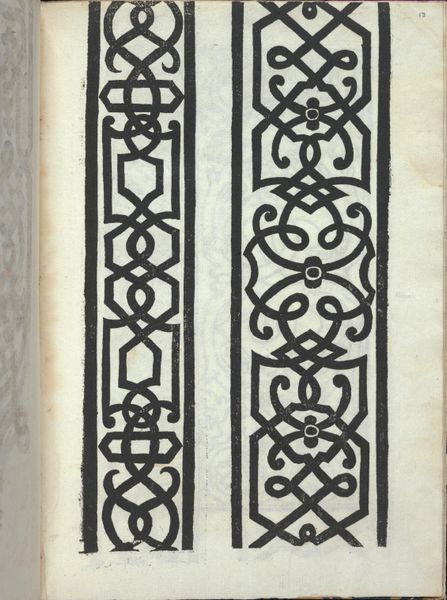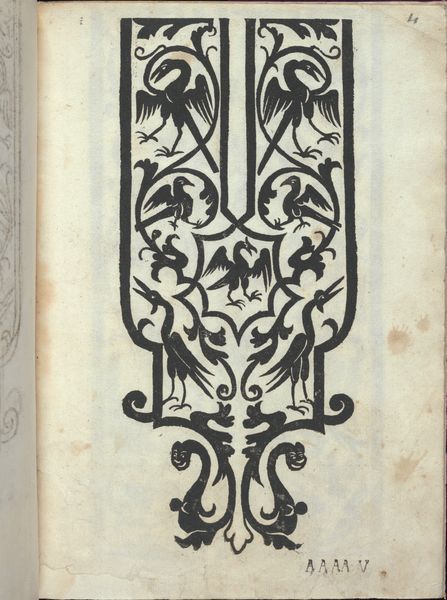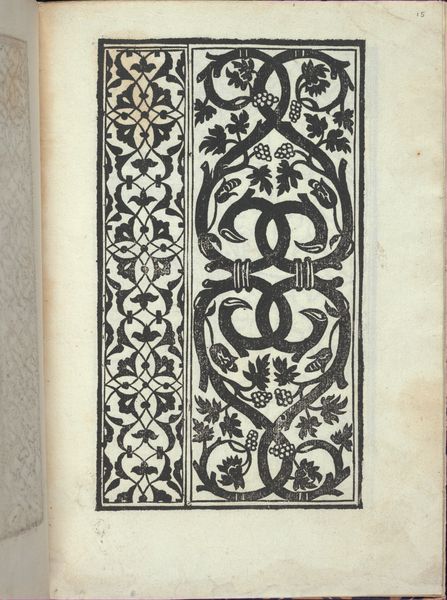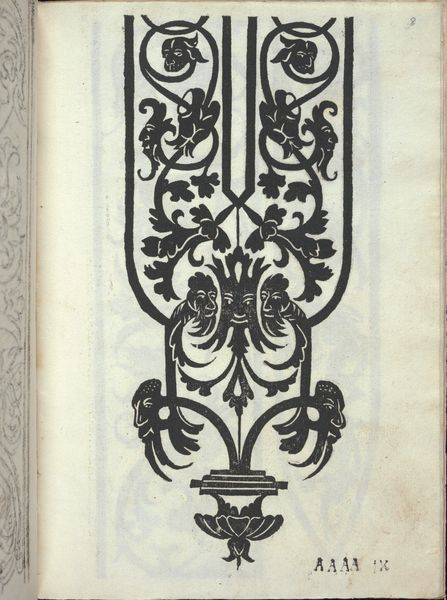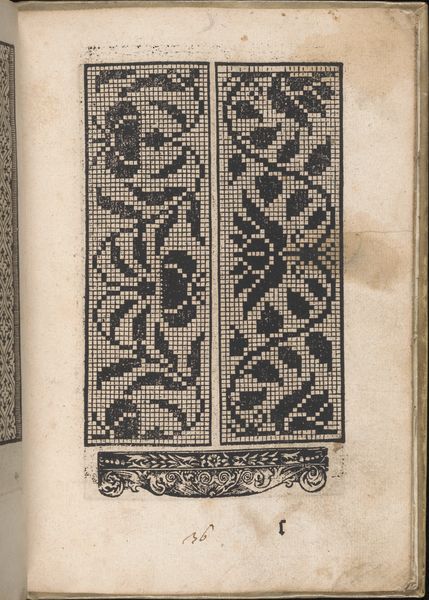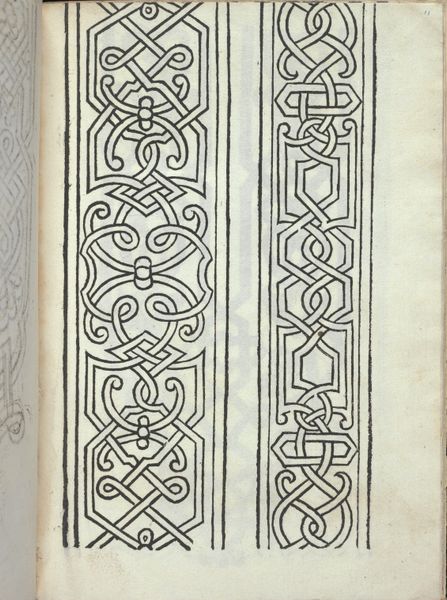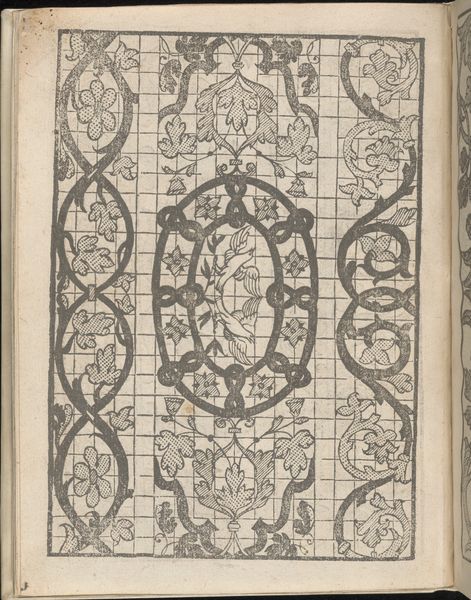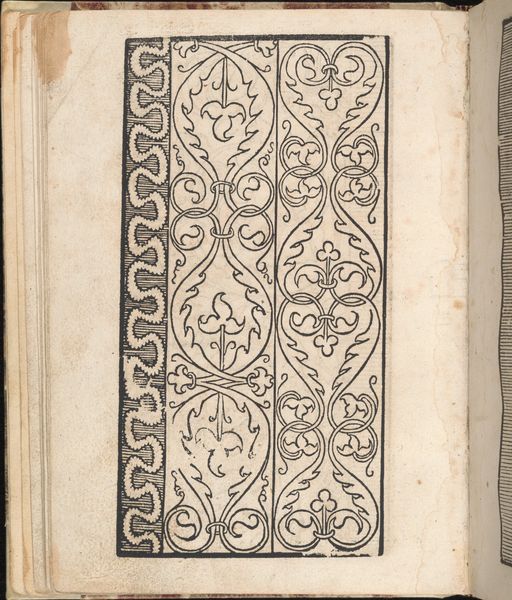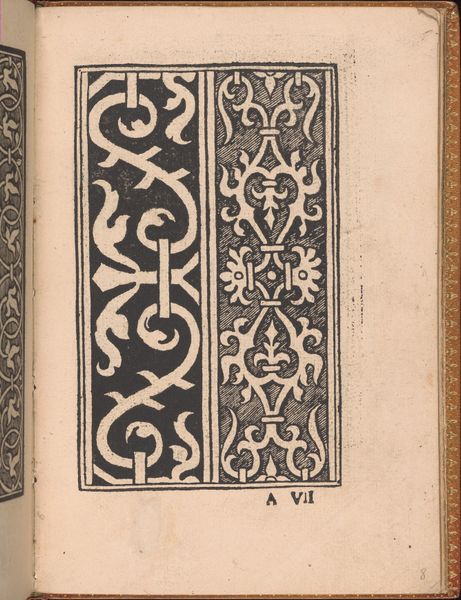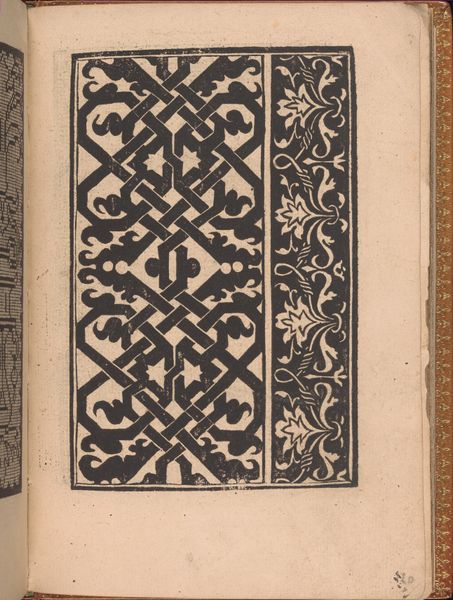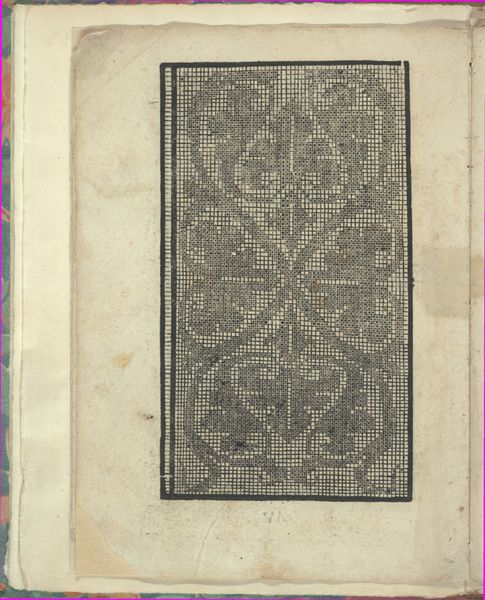
Libro quarto. De rechami per elquale se impara in diuersi modi lordine e il modo de recamare...Opera noua, page 12 (recto) 1532
0:00
0:00
drawing, graphic-art, ornament, print, paper, ink, engraving
#
drawing
#
graphic-art
#
ornament
# print
#
book
#
pattern
#
paper
#
11_renaissance
#
ink
#
geometric
#
engraving
Dimensions: Overall: 8 3/8 x 5 7/8 x 3/16 in. (21.2 x 14.9 x 0.5 cm)
Copyright: Public Domain
This is a page from “Libro quarto. De rechami,” a book of embroidery patterns printed in Venice by Alessandro Paganino in the early 16th century. These designs catered to the growing demand for pattern books, essential tools for artisans and home embroiderers. During the Renaissance, Venice thrived as a center for textile production and trade. Sumptuary laws attempted to regulate who could wear what, reflecting social hierarchies, but pattern books democratized access to fashionable designs. The knotwork motifs seen here are characteristic of the period, drawing on both classical and Islamic influences. Venice was a hub for cultural exchange, and its art reflected this cosmopolitanism. To truly understand the impact of these books, we might consult guild records, merchants' inventories, and even personal letters. These resources can tell us about the circulation of designs, the economics of embroidery, and the role of printed media in shaping early modern taste. Art historians see pattern books as part of a larger story about the intersection of art, commerce, and society.
Comments
No comments
Be the first to comment and join the conversation on the ultimate creative platform.
